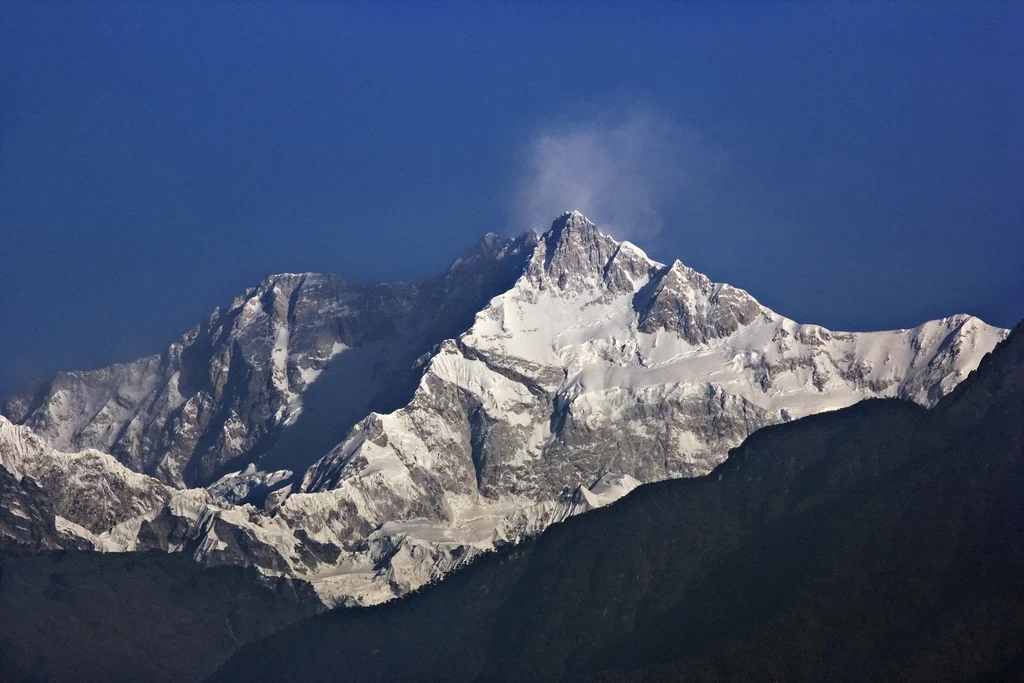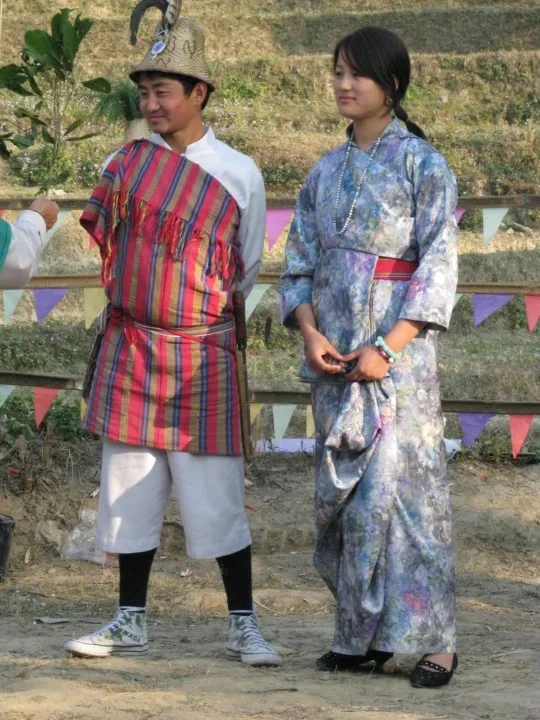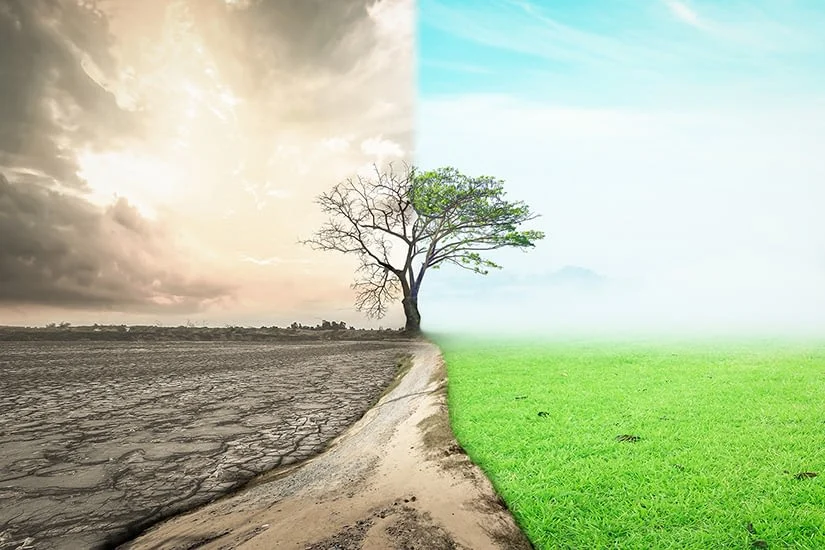Lepcha Tribe: Guardian of Kangchenjunga
In the rugged and lush mountainous terrain of the Indian state of Sikkim, where the snow-capped peaks of the Kanchenjunga range touch the sky, lives the Lepcha tribe. The Lepcha people call themselves “Rongkup”, which means ‘beloved children of Kanchenjunga’ or ‘people of Kanchenjunga’. They are believed to be among the most ancient inhabitants of the region, whose lives and culture are deeply intertwined with this great peak of the Himalayas. For the Lepchas, Kanchenjunga is not just a mountain, but a living, sacred guardian – the centerpiece of their identity, the source of their spiritual beliefs and the basis of their existence.1
विषय सूची
Lepcha Tribe: Origin and Language:
There are several theories about the origin of the Lepchas. Some ethnographers link them to Mongolian migrants from Myanmar, Thailand and Tibet, while others believe they are indigenous and have been living in the region for thousands of years. Their language, the Lepcha language (or Rong language), belongs to the Tibeto-Burman language family and has its own unique script, called the ‘Rong’ script. This script not only preserves their history and literature, but also reflects their deep connection with nature, with many characters inspired by nature.2
Kanchenjunga: A Sacred Power

Kanchenjunga occupies a central place in the cosmology of the Lepchas. They consider it to be the abode of their ancestors and gods. The five peaks of the mountain, called the “five treasures of the mountain”, hold immense significance in Lepcha culture. These treasures include gold, silver, precious stones, sacred scriptures and grains – all of which are symbols of prosperity and well-being of the Lepcha community. Kanchenjunga is worshipped as the supreme deity, who protects the entire region and its inhabitants. This belief is so strong that the Lepchas consider it the ‘abode of the gods’ and avoid violating its sanctity.3
For the Lepchas, worshipping Kanchenjungha is not just a religious ritual, but an integral part of their way of life. Keeping the mountain happy ensures the health and prosperity of their crops, their livestock and their communities. They believe that Kanchenjungha can bring disasters, such as landslides, floods or droughts, when angered. Therefore, they strive to maintain harmony with the mountain through constant prayers, rituals and sacrifices.
Lifestyle and connection with nature
The Lepchas are an agrarian society, who depend mainly on the cultivation of paddy, maize, cardamom and orange. Their farming methods are sustainable, which respect nature and do not harm the environment. They consider their land sacred and use it carefully. They have a deep bond with the forests, from where they obtain food, medicinal plants and building materials. The traditional huts of the Lepchas, called ‘Nhom’, are made of bamboo and wood and blend in with the surrounding natural environment4
Hunting and fishing have also been part of their lifestyle, but always with sustainability and respect. They believe that every animal and plant has a soul and should only be taken when necessary, and respect should be expressed with appropriate rituals. This profound ecological consciousness helps them live in a symbiotic relationship with nature.5
Religious and spiritual beliefs
The traditional religion of the Lepchas, known as the ‘Mun’ religion, is a complex blend of nature worship, shamanism and ancestor worship. They believe in a wide range of invisible spirits and deities who inhabit the mountains, rivers, forests and skies. The ‘Mun’ or shaman, is the spiritual leader of the community who communicates with these spirits, cures illness, makes prophecies and conducts rituals.6
Later, the Lepchas adopted Buddhism, particularly the Nyingmapa sect of Tibetan Buddhism, which came through the kings of Sikkim. A unique syncretism of their traditional beliefs with Buddhism took place, leading to the emergence of a distinct Lepcha Buddhism. In many Lepcha monasteries, Buddhist deities are worshipped along with traditional Lepcha spirits and guardian deities. This syncretism reflects their adaptability and ability to assimilate their native culture. The people of the Lepcha tribe are also known as the ‘Guardians of Kanchenjunga’. They consider this mountain as their sacred place and consider it their duty to protect it.7
Festivals and rituals

The festivals and rituals of the Lepchas are steeped in their respect for the agricultural cycle and nature. The most important of these is the ‘Longak Mun’ (or ‘Festival of Agriculture’), celebrated after the harvest. On this occasion, they offer the first part of the new crop to the gods and express gratitude for a good harvest. The ‘Tsechu’ festival, which is related to Buddhism, is also celebrated with enthusiasm, involving mask dances and religious rituals.8
Nature and ancestors also hold a deep significance in marriage and death rituals of the Lepcha community. They believe that after death, souls return to the land of the ancestors, which is often located in sacred mountains or forests. Funeral rituals help ensure a peaceful journey of the soul and help the living receive the blessings of the ancestors.9

Social structure and traditions
Lepcha society traditionally has a village-based, egalitarian structure. Their villages are often small and families maintain close ties with each other. Traditional chiefs and senior elders play an important role in the decision-making process, and great emphasis is placed on community cohesion. 10
Their traditional attire is also inspired by nature. Men wear ‘thokre’ (a long, woven robe), and women wear ‘dambun’ (a long skirt) and ‘tago’ (a blouse). These garments are often woven from locally sourced materials, such as cotton and silk, and use natural dyes. Jewellery is also simple and made from natural elements, such as stones, beads and silver.11
Modern challenges and conservation efforts
The Lepcha tribe is facing many challenges due to modernization and external influences. Deforestation, urbanization, and increasing tourism pressure are threatening their traditional lifestyle and ecology. Their language and cultural traditions are also slowly becoming endangered as the younger generation is adopting mainstream education and lifestyle.12
Despite these challenges, the Lepchas are actively trying to preserve their culture and identity. Several Lepcha organisations and cultural centres are working to promote their language, dance, music and handicrafts. Through education and awareness programmes they are trying to highlight the importance of their unique heritage. Their spiritual connection with Kanchenjunga inspires them to protect their land and traditions, making them act not only as a tribe but also as custodians of the Himalayan ecology.13
The existence of the Lepcha tribe is a living testimony to the sanctity of Kanchenjunga and the delicate balance of the Himalayan ecology. Their lives, their beliefs and their struggles teach us how important it is to live in harmony with nature, and how a community can struggle to preserve its roots and heritage. They are truly the ‘Guardians of Kanchenjunga’, not just protecting the mountain, but also preserving the ancient knowledge and life values that the world needs most today.
Frequently Asked Questions (FAQs)
Who are the Lepcha tribe and where do they live?
The Lepcha tribe is an indigenous people inhabiting the Indian state of Sikkim and to a lesser extent the Darjeeling region of West Bengal. They call themselves “Rongkup”, which means ‘beloved children of Kanchenjunga’ or ‘people of Kanchenjunga’.
Why does the Lepcha tribe give importance to Kanchenjungha?
The Lepcha tribe regards Kanchenjunga as their sacred guardian, the abode of ancestors and gods. They consider it the ‘abode of the gods’ and worship the five peaks of the mountain as the “five treasures of the mountain”, which are symbols of prosperity and well-being for them.
What is the main language and script of Lepcha people?
The Lepcha people have their own unique language, the Lepcha language (or Rong language), which belongs to the Tibeto-Burman language family. It has its own unique script, called the ‘Rong’ script, which includes many characters inspired by nature.
What is the traditional religion of the Lepcha tribe and what other religions do they follow?
The Lepcha people depend mainly on agriculture, cultivating paddy, maize, cardamom and orange. Their agricultural practices are sustainable and they obtain food, medicinal plants and building materials from the forests while respecting nature.
What are the main festivals of Lepcha tribe?
A major festival of the Lepchas is ‘Longak Mun’ (or ‘Festival of Agriculture’), which is celebrated after the harvest. They also celebrate the Buddhist festival ‘Tsechu’ with great enthusiasm, which includes mask dances.
What challenges are the Lepcha tribe facing today?
The Lepcha tribe is facing challenges like extinction of their traditional lifestyle, language and cultural traditions due to deforestation, urbanization, tourism pressure and modernization.
How are the Lepchas preserving their culture and heritage?
The Lepchas are actively working to promote their language, dance, music and handicrafts through a number of organisations and cultural centres. They are also highlighting the significance of their unique heritage through education and awareness programmes.
संदर्भ (References)
- VEDMATA EDUCATION (n.d.). Available on Lepcha Tribe. (Last visited 19 July 2025). ↩︎
- Rongkup Study Group. (2020). A Brief Introduction to the Lepcha Language and Script. Gangtok University Press. ↩︎
- Bhutia, P. (2017). Guardians of Kanchenjunga: Lepcha cosmology and sacred geography. Journal of Himalayan Studies, 12(3), 45-62. ↩︎
- Tamang, L. (2019). Sustainable agricultural practices of the Lepchas in Sikkim. Environmental and Sociological Review, 8(1), 112-130 ↩︎
- Chhetri, S. (2016). Nature and spiritual connection in the Lepcha community. Indian Journal of Tribal Studies, 4(2), 78-90. ↩︎
- Denzongpa, K. (2015). Mun Priests of Sikkim: An Investigation of Traditional Shamanism. Asiatic Society Bulletin, 39(4), 21-35. ↩︎
- Union Ministry of Culture, Government of India. (n.d.). Tribes of India: Lepcha Community. Cultural Heritage Portal. ↩︎
- Sikkim Tourism Department. (n.d.). Available at Traditional Festivals of Sikkim. (Last accessed 15 July 2025). ↩︎
- Bhutia, T. (2018). Lepcha rituals and life cycle traditions. South Asian Ethnography, 5(1), 10-25 ↩︎
- Lama, D. (2021). Community governance and chieftaincy system in Lepcha society. Journal of Rural Development, 15(2), 55-68 ↩︎
- Indian Handicrafts Board. (n.d.). Lepcha Textiles and Jewellery: A Cultural Heritage. Available at. (last accessed 19 July 2025). ↩︎
- Ministry of Environment and Forests, Government of India. (2022). Himalayan Biodiversity and Impacts on Indigenous Communities. Annual Report. ↩︎
- Lepcha Heritage Foundation. (n.d.). Available at Preserving Our Heritage. (Last accessed 15 July 2025). ↩︎








